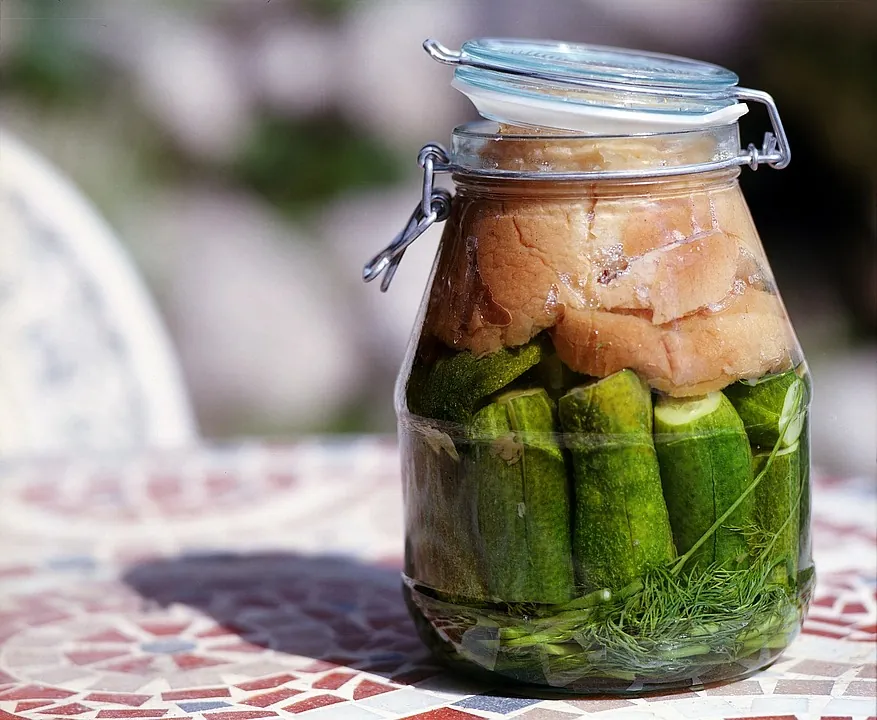Blog
Funky Fermented Foods
By Jacob Gerdes, Arizona State Nutrition Communications Student
Food producers are always trying to create new ways to market healthy food to consumers. They’ll use health claims, create new trends, and occasionally bring back old trends. Probiotics are marketed to consumers in a way that makes them seem new and exciting and as if they offer some sort of health benefit never before used. The truth is, probiotics are far from new, in fact fermentation, the process used to create probiotics, has been used by many cultures throughout history.

According to Food and Nutrition magazine, an affiliate magazine of the Academy of Nutrition and Dietetics, fermented foods date back to 6000 B.C. with origins in the Fertile Crescent. So has anything changed about fermentation? Well if you do not count the marketing ploys used to sell probiotics to consumers, then no.
Let’s take a look into the actual fermentation process, what exactly are probiotics, how fermented foods are beneficial to everyone’s diet, and some common foods that could be easily found in your grocery store.
So, what’s This thing called Fermentation?
To understand fermentation we’ll use a quick and oversimplified explanation from the Encyclopedia Britannica. Fermentation is the anaerobic (without oxygen) breakdown of glucose or simple sugars. The organism involved with this process, are bacteria or other microscopic organisms; they are able to break down these molecules without oxygen and create the byproduct of Carbon Dioxide (CO2); just one among many other byproducts. This is the same process that adds the fizz to your beer. In beer’s case, yeast assumes the task of breakdown. If you have ever tried Kombucha, its fizziness is from the same cause.
How is this related to health? It’s all about the microorganisms.
The glucose acts as food and stimulates the reproduction of the bacteria. Your body’s intestinal tract is lined with billions of diverse microbes and occasionally your body can develop an imbalance between harmful bacteria/yeast and the good bacteria. As the good bacteria acts as a defense against different pathogens, it also helps aid digestion. The goal of health is to maintain the proper balance and diversity of the good gut bacteria.
Probiotics, usually a fermented dairy culture, come in many forms such as food and supplements. And, they help restore balance. The Mayo clinic claims that it is not necessary to consume a probiotic but it may be beneficial in restoring your guts living environment.
The many benefits
A scientific review published in the Journal of Applied Microbiology list the benefits of probiotics in the diet including:
- Improving intestinal tract health
- Enhancing the immune system, synthesizing and enhancing the bioavailability of nutrients
- Reducing symptoms of lactose intolerance, decreasing the prevalence of allergy in susceptible individuals
- Reducing risk of certain cancers
The use of probiotics has many health benefits but my favorite aspect regarding probiotics is that they can make a tasty and interesting treat. Some well-known examples of probiotics include Miso, tempeh, Pickles (my favorite), Sauerkraut (my second favorite), Kimchi, yogurt, and kefir. If lactose negatively affects your digestion, stick with the first five on the list. All of them can add an interesting flavor to any dish or can be eaten on their own.
Many grocery stores have refrigerated versions of these foods; refrigeration preserves the amount of living cultures within the foods. Another favorite fermented item of mine is Kombucha, which I mentioned earlier. Kombucha is a fermented tea drink that is widely sold in many grocery and convenience stores.
Common Foods
Another great thing about fermented foods is the fact that they are traditionally a homemade food that can be easily sustained. There are endless pickling and fermenting recipes that create a great opportunity to educate your children, friends, or other loved ones on chemistry, health, history and also offer the opportunity to be adventurous, try a new food, and create your own healthy meals. I personally have brewed my own Kombucha and flavored the batch with seasonal fruits from local farms. The idea is to avoid being influenced by marketers trying to sell you an old idea for high prices. If just you put in a little effort, you will learn the skill of fermentation and can enjoy your work and reap the benefits of health.
Next time you go shopping, try a fermented food or beverage (other than beer). Kombucha is as easy as grabbing a small bottle from the grocery store and drinking it on your drive home. I promise life is better with a little bit of fermenting funk in it!
Learn more about fermented foods here!
References:
- Foroutan R. The History and Health Benefits of Fermented Food. Food and Nutrition Magazine Website. Published February 2, 2012. Accessed April 20, 2016. URL: http://www.foodandnutrition.org/Winter-2012/The-History-and-Health-Benefits-of-Fermented-Food/
- The Editors of Encyclopædia Britannica. Fermentation. Encyclopedia Britannica Website. Updated February 4, 2016. Accessed April 20, 2016. URL: http://www.britannica.com/science/fermentation
- Zeratsky K. Do I need probiotics and prebitotics in my diet?. Mayo Clinic Consumer Health Website. Published October 15, 2014. Accessed April 20, 2016. URL: http://www.mayoclinic.org/healthy-lifestyle/consumer-health/expert-answers/probiotics/faq-20058065
- Parvez S, Malik KA, Ah Kang S, Kim HY. Probiotics and their fermented food products are beneficial for health. J Appl Microbiol. Published June 2006; 100(6):1171-85. Accessed April 20, 2016. URL: http://www.ncbi.nlm.nih.gov/pubmed/16696665
















